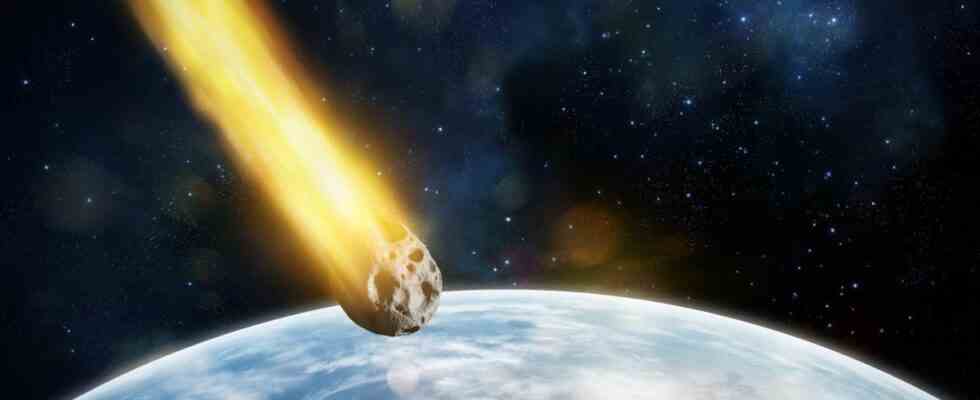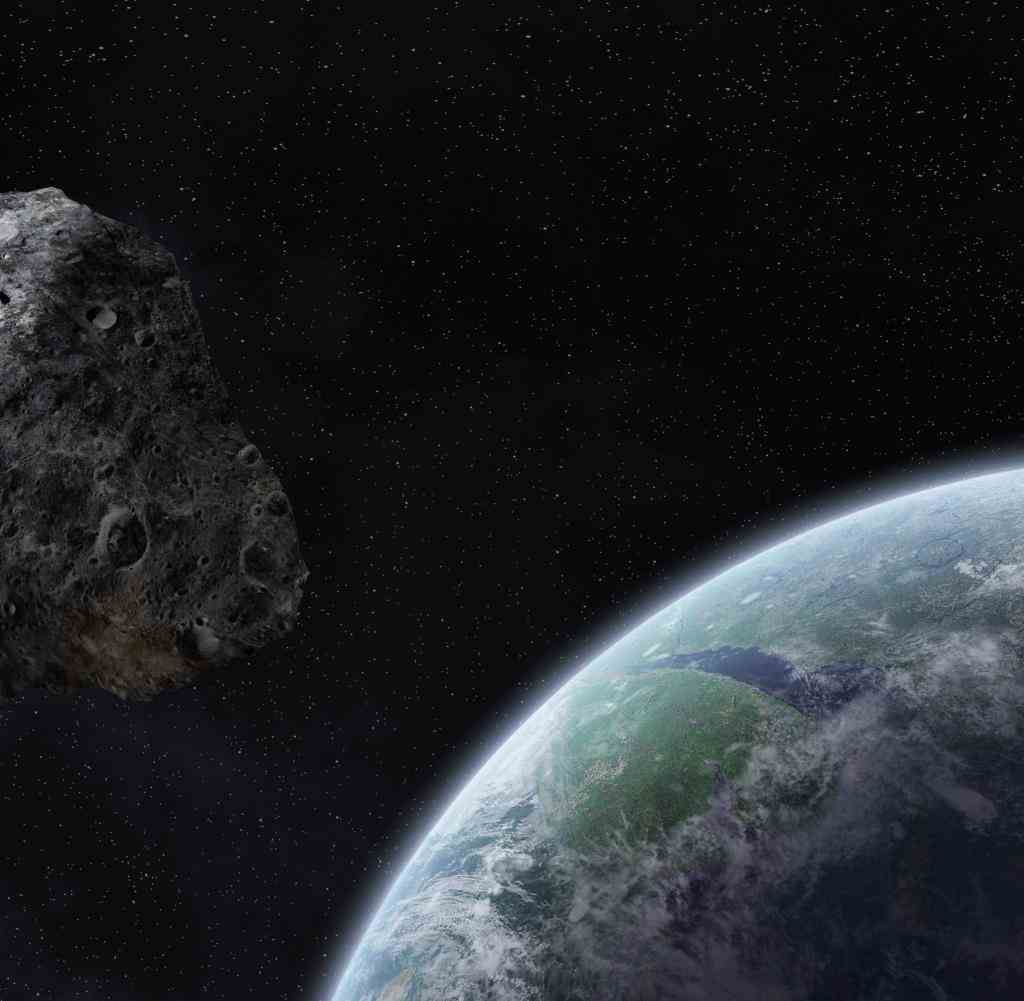
Illustration of an asteroid on a collision course with Earth
Source: Getty Images
To minimize the risk of devastating impacts on Earth, researchers regularly use special instruments to search for asteroids. But most search programs have a blind spot.
V65 million years ago, an asteroid ten to fifteen kilometers across crashed into the earth – and ended the age of the dinosaurs. To prevent humanity from suffering a similar fate at some point, astronomers use special instruments to search for asteroids that could pose a threat to Earth. But such search programs have a blind spot, as does the American astronomer Scott Sheppard currently highlighted in the journal “Science”..
“The search for asteroids generally takes place at night – so it finds celestial bodies that are outside of Earth’s orbit,” explains Sheppard. But asteroids also move within the Earth’s orbit – and could suddenly and unexpectedly come shooting towards our planet from the direction of the sun.
Of course, researchers have known this for a long time – only observations in the direction of the sun are difficult. There are already some telescopes that specialize in twilight observations – and indeed they have already discovered several previously unknown asteroids that are exclusively within Earth’s orbit.
Only last year, an asteroid was detected that crosses the orbits of both Venus and Mercury. It moves in a highly elliptical orbit and comes closer to the sun than any other known asteroid.
Surprise find raises questions
The celestial body with the catalog designation 2021 PH27 is probably about a kilometer across – which came as a surprise to the discoverers. Because actually one had suspected only a few larger asteroids within the earth’s orbit. Discovering one of these so quickly would be unusual. So maybe there are many more large – and therefore particularly dangerous – asteroids in the inner solar system than assumed?
Sheppard warns caution here: Estimating the size of an asteroid is difficult, 2021 PH27 could well be significantly smaller and then better fit previous predictions. Nevertheless, he also warns that the majority of the asteroids within the earth’s orbit have remained undiscovered so far – it is therefore difficult to assess the danger they pose.
It is not very likely that there are many asteroids larger than a kilometer in size – called “planet killers” by astronomers because they would completely devastate country-sized regions and have strong global effects up to the collapse of the current ecosystem. But even an asteroid in the size range of a hundred to two hundred meters would destroy an entire metropolitan region like a large atomic bomb.
It is conceivable, Sheppard argues, that there is a reservoir of such smaller asteroids, called vulcanoids, within the orbit of Mercury, the planet closest to the Sun. Such vulcanoids could migrate further outwards due to orbital disturbances and thus eventually threaten the earth. Therefore, in his opinion, the search for asteroids near the sun should not only be maintained, but expanded.
Asteroids from the inner solar system are also a danger because the warning time would be considerably shorter if such an object was actually on course for the earth. It is therefore important to determine and monitor the orbits of all asteroids that could potentially pose a threat to Earth.
A four-meter telescope at the Cerro Tololo Inter-American Observatory in Chile is currently proving to be particularly successful. It has already detected several objects within Earth’s orbit – including 2021 PH27.



